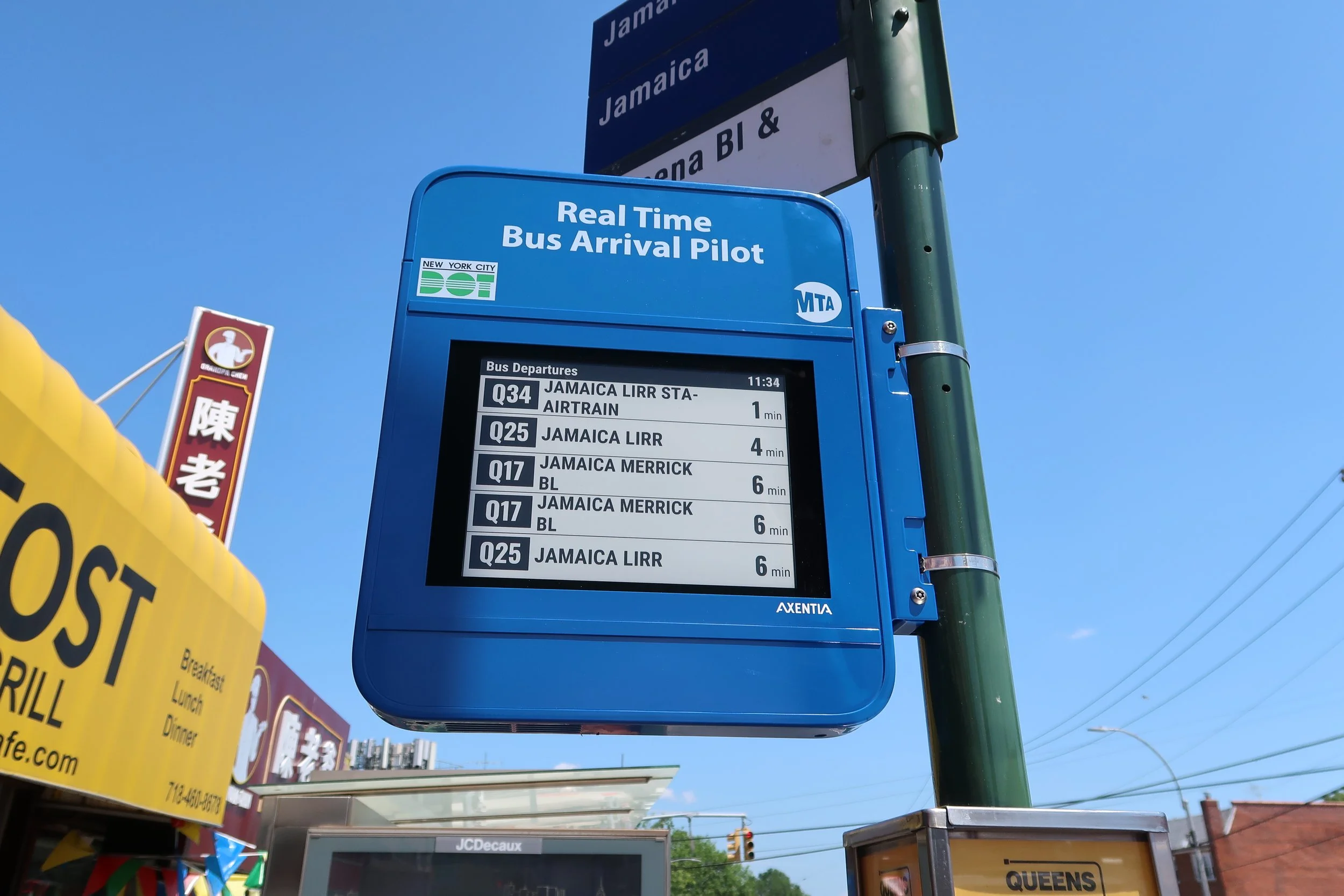New York City Tests Battery-Powered Displays to Modernize Rider Communication
In New York City, a few seconds of clear, timely information can make a world of difference for transit riders navigating busy streets and unpredictable schedules.
That’s why the NYC Department of Transportation (DOT) partnered with Urban Solar after we were named a winner of the Innovation Lab’s Transit Tech Lab challenge. They are now piloting our battery-powered e-paper displays in Queens and Manhattan — technology designed to keep passengers informed in real time without the usual constraints of power hookups, costly infrastructure or relying on solar-viable sites.
Overcoming solar limitations and installing without disruption
Amidst New York City’s dense urban landscape solar-powered systems can struggle. Tall buildings create shade, ongoing construction can block sunlight and snowfall during winter months can further limit solar site viability. Our ultra-low-power, battery-operated displays eliminate these challenges and work anywhere in the city — from shady corridors to narrow streets surrounded by tall buildings, snowy winters and more.
The pilot also proved how fast and simple installation could be. With no trenching, wiring or solar panels required, crews mounted displays directly to existing poles and avoided disruptions to riders, pedestrians or infrastructure. For NYC DOT, this meant lower costs, a quicker rollout and a pathway to more equitable access to real-time rider information across the city.
2 display types, 1 goal: a better transit experience for everyone
Urban Solar worked closely with NYC DOT to deliver flexible, accessible, and modern communication tools across Manhattan and Queens.
13” 4-button e-paper displays
These compact displays provide real-time bus arrival information, route maps, service updates, alerts and QR codes at the push of a button. Designed with accessibility in mind, these displays feature a braille ring and text-to-speech function for visually impaired riders.
Double-sided flag mount displays with APS technology
Installed at a pedestrian-friendly height of 7 feet, these displays integrate Accessible Pedestrian Signals (APS), which alert visually impaired passengers that the display is interactive. Built for durability and ADA compliance, they’re an easy and inclusive way to keep riders informed.
Measurable results in real-time
Since starting in June 2025, the pilot has already produced benefits including:
Improved rider experience
Real-time updates helped reduce perceived wait times and keep passengers informed during delays.
Scalable deployment
No trenching or electrical work means faster rollout across multiple locations.
Enhanced accessibility
APS-equipped displays give visually impaired riders the tools they need to travel more independently.
Ready to bring real-time information to your riders?
If you’re looking to improve passenger communication without costly infrastructure upgrades, our team is here to help. Tell us about your project and our experts will work with you to find the right solution — whether it’s battery-powered, solar-powered or a custom hybrid approach.
Written by:
Jacqueline Langen
Jacqueline is a passionate writer with a background in journalism and experience across industries including news, travel, IT and renewable energy. When she's not crafting content, you can find her beach combing or surfing the waves of
Vancouver Island, BC.








